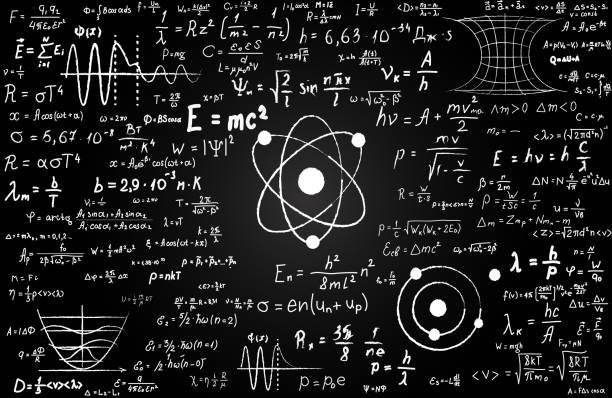Question posted by student: “The CAPS document requires that teaching and learning of mathematics should be contextualised. One way to contextualise mathematics is through modelling.
- What is mathematical modelling?
- What are the advantages of mathematical modelling?
- What are the limitations of mathematical modelling?
What is Mathematical Modelling?
Mathematical modelling is the process of representing real-world problems or phenomena using mathematical concepts and structures. It involves developing mathematical formulas or equations that describe a certain situation or behavior. By converting real-world challenges into mathematical terms, one can use analytical methods to derive solutions or gain insights.
Advantages of Mathematical Modelling:
- Problem-Solving: Mathematical models can help in providing solutions to complex real-world problems by breaking them down into simpler, more manageable mathematical representations.
- Predictive Analysis: Once a model has been established, it can be used to predict future outcomes or behaviors based on varying input parameters.
- Cost-Efficient: Using models can reduce the cost of experimentation or trial and error in real-world scenarios. For instance, before building a bridge, engineers can use mathematical models to predict its behavior under various conditions.
- Understanding Complex Systems: Mathematical models can capture the intricate interdependencies in systems, making it easier to understand how they function.
- Universal Language: Mathematics is a universal language. Mathematical models can be shared and understood across different disciplines and cultures.
Theories Used in Mathematical Modelling
- Probability Theory: Used in risk assessment and decision-making scenarios, probability theory helps in predicting the likelihood of specific outcomes. For instance, actuaries use probability models to determine insurance premiums based on various risk factors.
- Game Theory: Often used in economics and behavioral science, game theory models strategic interactions among rational agents. A classic example is the “Prisoner’s Dilemma,” which explores the decision-making process in a scenario involving two arrested individuals.
- Optimization Theory: This theory aims to find the best solution from a set of possible options. For example, businesses might use linear programming to optimize resource allocation for maximum profit.
- Differential Equations: Used in physics and engineering, differential equations model change over time or space. For example, they are employed in modelling the spread of diseases in epidemiology.
- Graph Theory: Used in network design and routing problems, graph theory represents relationships between connected elements. An example is optimizing the shortest path in a transportation network.
Real-world Examples
- Weather Forecasting: Meteorologists use complex mathematical models to predict weather patterns, using data like temperature, wind speed, and humidity.
- Financial Markets: Traders and analysts use mathematical models to forecast stock prices and market trends. These models take into account various factors, including past performance and market volatility.
- Healthcare: In medicine, mathematical models help in understanding the growth of tumors, the spread of diseases, and the effectiveness of various treatment regimes.
- Environmental Science: Models are used to assess the impact of human activity on ecosystems, for example, predicting how deforestation might impact local weather patterns and biodiversity.
- Supply Chain Management: Businesses use mathematical models to optimize warehouse locations, transport routes, and inventory levels.
In summary, mathematical modelling provides a structured approach to solving complex problems across a multitude of disciplines. It incorporates various theories to build models that are as accurate as possible while still being computationally feasible. These models serve as valuable tools for gaining insights into complex systems, thereby aiding in effective decision-making.
Limitations of Mathematical Modelling
- Simplifications: All models are simplifications of reality. They might not capture all the complexities or nuances of a real-world situation.
- Accuracy: The accuracy of a model depends on the assumptions made during its creation. If these assumptions are not accurate or are based on incomplete data, the model’s predictions might be off.
- Requires Expertise: Constructing and interpreting mathematical models require a certain level of expertise. Misunderstandings can lead to incorrect conclusions.
- Dynamic Systems: Some systems might change over time, making the model obsolete or requiring constant updates.
- Over-Reliance: Excessive dependence on models without considering other qualitative factors can lead to flawed decision-making.
Remember, mathematical models are tools to assist in understanding and decision-making. Their effectiveness depends on how accurately they capture the complexities of the real-world situations they represent.
Limitations of Mathematical Modelling: Critical Theories and Examples
Simplifications
- Critical Theory: Social Constructionism
- This theory posits that knowledge is not discovered but constructed, meaning that any model is a simplified narrative created from a specific viewpoint.
- Example: Economic models often assume “rational actors” for simplicity, but this overlooks complex human behaviors like altruism or irrationality, which could be crucial in real-world applications.
Accuracy
- Critical Theory: Falsifiability
- Proposed by Karl Popper, this theory emphasizes that for any scientific claim to be credible, it must be disprovable. Many mathematical models are based on assumptions that are not easily falsifiable, calling their validity into question.
- Example: In climate science, predictive models may rely on assumptions about future human behavior or technological advancements, which are inherently uncertain.
Requires Expertise
- Critical Theory: Expertise Bias
- This suggests that reliance on expert opinions or methods can introduce bias and restrict alternative viewpoints or methods.
- Example: In medicine, heavy reliance on statistical models to predict patient outcomes may overshadow individual patient needs or alternative treatments.
Dynamic Systems
- Critical Theory: Complexity Theory
- This theory argues that some systems are too complex to be accurately modeled due to their dynamic and nonlinear nature.
- Example: In ecosystem studies, models that predict species interaction can quickly become obsolete as new invasive species are introduced or existing species evolve.
Over-Reliance
- Critical Theory: Technological Determinism
- This theory asserts that technology shapes how individuals and institutions can act, suggesting an over-reliance on technological solutions like mathematical models.
- Example: In financial markets, over-reliance on quantitative models led to the 2008 financial crisis, as these models failed to account for the complexity of human behavior in economic systems.
Understanding these limitations is essential for a holistic approach to problem-solving and decision-making. While mathematical models are powerful tools, they should be used in conjunction with other methods and constantly revised to adapt to new information and conditions.





